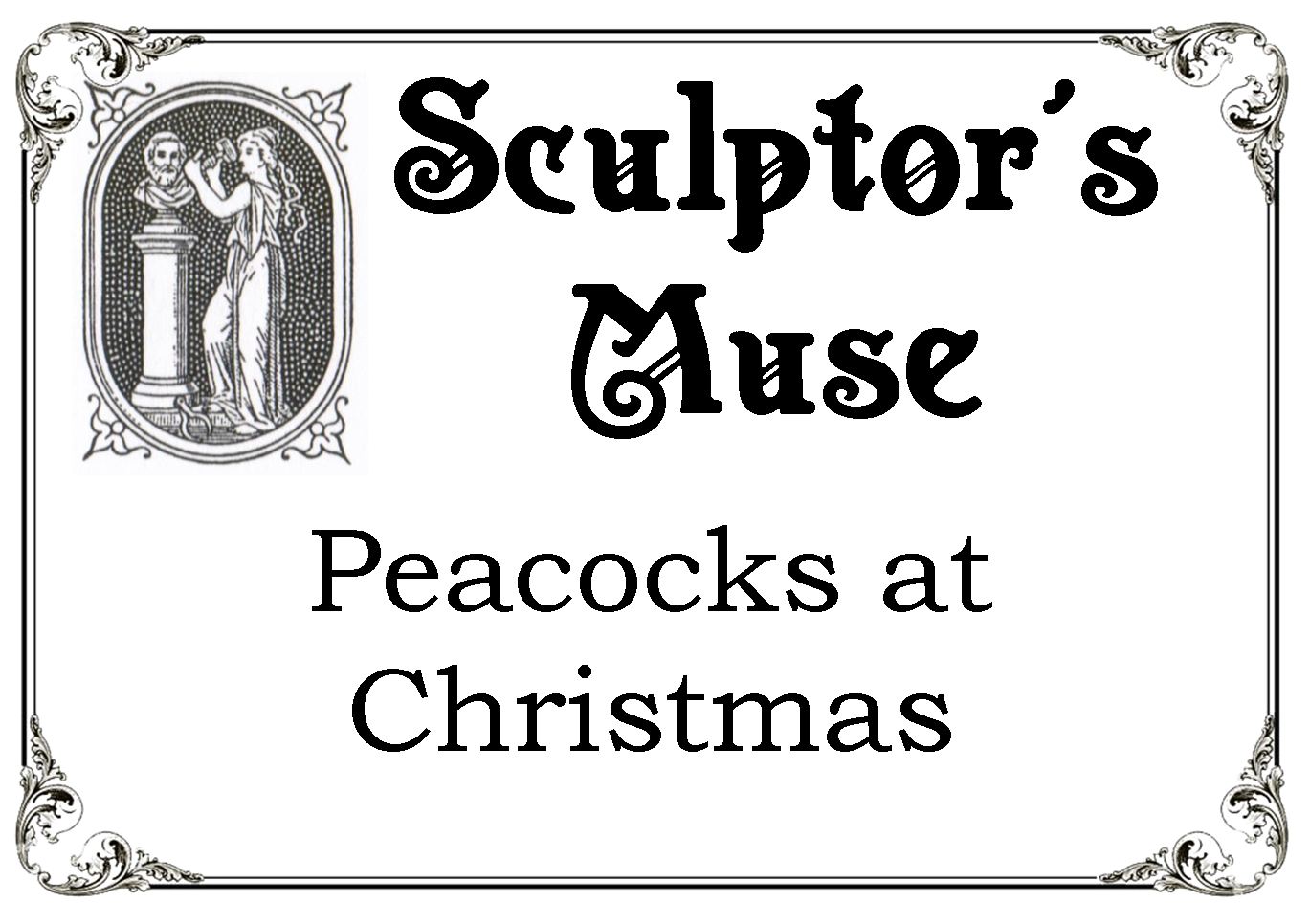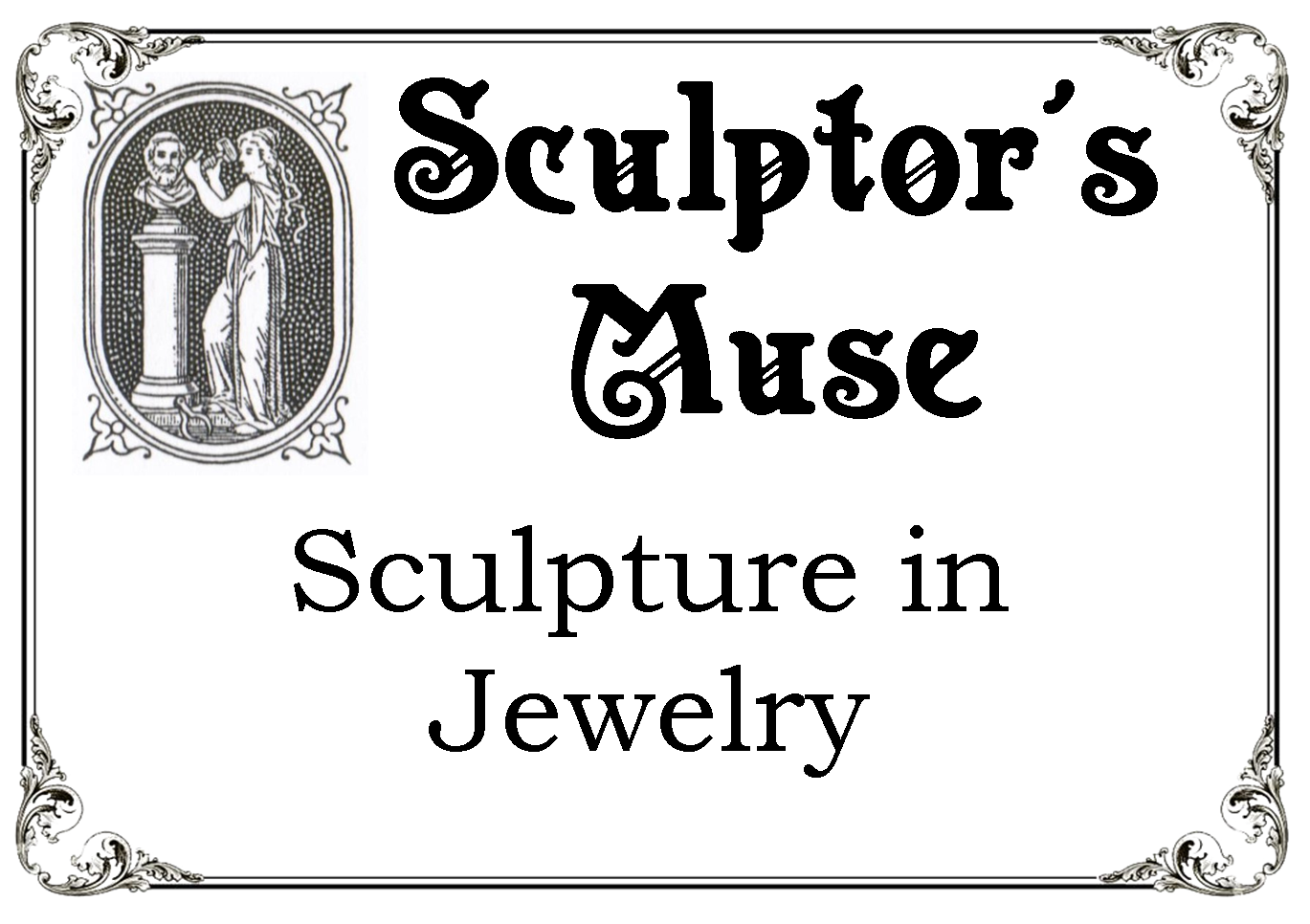
Thoughtfully Preparing for Easter Sunday

How many times have I heard, "We go 'all out' decorating and celebrating Christmas, but as Christians, we should REALLY celebrate Easter more." I think both are important, but I do see their point. This year I intentionally gave a lot of thought to 'celebrating' Easter more and what that might look like. The problem is mainly for Protestants - with no liturgical calendar, Easter Sunday 'pops up' on them unawares as the date skips around on the calendar, unlike Christmas with its set date. You go to church one day and realize it's Palm Sunday (maybe) and then you rush home to get out your Resurrection Eggs and think about what the children and yourself should wear to church on Easter Sunday, and plan a big dinner or where you should go out to eat. Then POOF - Easter Sunday is over, life goes on.... until Christmas.
Now as an Evangelical Christian myself, this was my 'modis operandi' for many years. However, being an artist with a love for art history and Church history and for things of Beauty - this year I wanted to more 'thoughtfully' prepare for Easter Sunday. (Let me pause here to state that I think referring to Easter as Resurrection Sunday is a wonderful thing! It gives a greater meaning to what we, as Christians, are celebrating. However, for the purpose of this blog post and as our family has called it Easter Sunday for years I will refer to Resurrection Sunday as Easter Sunday.)
My intent on writing this blog is that, perhaps, these ideas of mine may be inspiration for yourself. Everyone has their own tastes, but you some of what I have done may spark some ideas for own home. The problem with the complaint "...as a Christian, we should celebrate Easter Sunday more" is that (especially Protestants) we don't have any guidance or direction. Any "Easter decorations" available are kitschy chicks and bunnies and colored eggs. You may find a few things at the Christian book store - perhaps a crown of thorns... or polyresin mass produced versions of the lion and lamb. I could find very few things that deeply reflected my love for the meaning of Christ Resurrection and what that means as Salvation from God available to all who would believe. Additionally - my home is historic, built in 1852. I wanted to make the decorations accent the historic beauty of the house and vice versa. For Christmas, my home abounds with Victorian inspired decor much of which I have made. What could I do for Easter Sunday?
So I approached the project as I would any of my art commissions: Research and following my personal Arcanum: Truth and Beauty
In Church history (and Christian Art History) there was a wealth of inspiration. First, the observance of Lent. Now this is not a biblical observance, but merely a tradition. That being said, I cheerfully 'gleaned' from this tradition. Lent is a time before Easter Sunday that is used to prepare one's self for the celebration of the resurrection of Christ. This was augmented by fasting, giving and spending more focused time on prayer and reading the Bible. Interestingly, this is also the purpose of Advent: the four weeks before Christmas. Historically, all the decorating and celebrations of Christmas didn't even start until Advent ended on Christmas Day! You were fasting and focusing up until that time and then Christmas Day marked the 'first day of Christmas' with twelve (or more) days of celebrating to FOLLOW. Well, that was then - in our culture now it would be nigh impossible not to decorate and enjoy the festivities during all that Advent time between Thanksgiving and Christmas. But now you know - the twelve days of Christmas started with Christmas Day - (I'm sure you'll sleep better with that bit of knowledge! ha!)
Back to Lent: though a tradition of man, I personally believe that anytime I can deny my flesh it's probably a good thing for me as a spiritual exercise. So I have observed Lent for years. My husband, who comes from a long lineage of Baptist preachers and missionaries has no interest in observing Lent - and we both enjoy celebrating the Resurrection of Christ! So, fasting may not be your 'cup of tea' but there is another thing that Lent does, and that is to anticipate Easter Sunday. Lent starts with Ash Wednesday (the day after Mardi-gras) and continues for 46 days to Easter. So I putting up your Easter Sunday decorations on or around Ash Wednesday will create a 'season' of visual reminders that Easter is a'coming!
So, now that I established the timing or the 'season' for my decorations to be up, I then had to try to create what they would look like and what they would be. Now art historians have this age-old argument when it comes to the 'decorations' found in the churches from the time they were first built up to the present: are the decorations symbolic OR are they merely decorative. I wrote my honors paper on this very subject regarding the Romanesque tympanum above the doors of Barfreston Church - my personal conclusion: BOTH! There are some elements that are obviously symbolic and others that are obviously decorative. It makes me think of the verse in Exodus when God was describing to Moses the priestly garments for Aaron and his sons...
This theme of "glory and beauty" is also repeated in Ex. 28:40. I Chronicles 16:29, and Job 40:10. So I wanted to create these decorations as combination of symbolic and the beautiful. (there is also a place for the 'whimsical' but that will be discussed later .)

Tip #1 - Choosing the Materials
There were obvious symbols that I wanted that came directly from scripture: a crown of thorns was a definite. But then also I wanted a crown of glory. I couldn't find a kingly crown anywhere that didn't make me think of a fantasy movie, so I ended up making my own from lamp banding. Another symbolic element was the nails. I found a blacksmith who forged five heavy nails for me.
Other scriptural references included: palm branches, a tomb, the cross/crucifxion, Christ Glorified/Resurrected, and the linen shroud found by Peter and John. Also there was the symbol of Jesus as the "Lamb of God"
Now for the "Beauty" elements: Easter lilies were a definite! Not in scripture but readily identified with Easter Sunday in our day and time, I also wanted to use a combination of textural elements (as this is my style in sculpture, it spills over into other areas) so I used a rough jute twine, and burlap fabric and ribbon along with damask and satin ribbons. In searching for fabrics with 'crosses' I came upon a treasure trove of 'liturgical' fabrics, ribbons and trims that are available. Beautiful jacquards and damasks with symbolic Christian elements woven into them. Though there are many colors available, I decided on a simple monochromatic color scheme of neutrals and ivories. This was accented by the greens from the palms and Easter lilies.
Another beautiful and symbolic element I added was peacock feathers. Most people today think of the phrase 'proud as a peacock' which is a long standing symbol for that beautiful bird. However, historically there was another symbolism attached to the peacock.... the peacock was one of four symbols used for Christ. (Today we are only familiar with the Lamb and the 'fish' or icthus) In the 11th century, they believed the flesh of the peacock would not rot. Physiologically speaking, the flesh of this bird is extremely dense, and can have a tendency to dry out rather than rot. However, since the Psalms say "the flesh of Thy Holy One will not undergo decay" the peacock became a symbol of Christ. In addition to that, the 'eyes' in the peacock's feathers were used to symbolize the omnipresent Eye of God. Because of these symbols, you can sometimes find a peacock in the rafters of the stable at the Nativity in Medieval and Renaissance paintings. It's always fun to find one!
The last element I wanted was bells - not jingle bells, I use those around Christmas - but small 'church' bells, because the sound and meaning of their ringing is so joyful!
Tip #2 - Create dioramas in areas most seen.
As our family goes about their day to day business, I chose areas in the house they would often pass, and in those areas created dioramas or 'scenes' full of imagery, symbolism and beauty. The following photos are in my foyer. (the portrait is of my four children that I painted as an anniversary gift for my husband years ago, it is 6 ft wide and 5 ft tall) Along the top, I combined burlap material, ivory damask ribbon, palms, Easter lilies, peacock feathers and tassels. This was to balance and frame the diorama below.

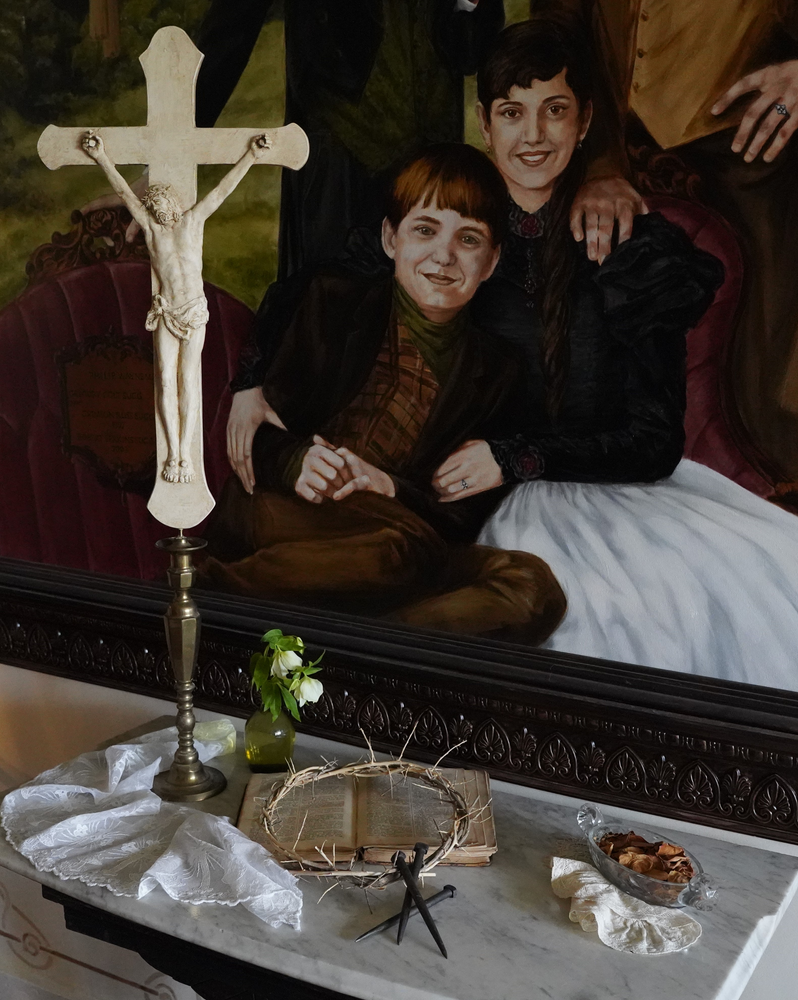
The Crucifix is a study of one I had seen at the Louvre by Puget which is one of the most stirring I have seen. I attached it to an old heavy brass candlestick to give it height. The Bible is as old as our house and is open to the crucifixion in John. The crown of thorns and hand forged nails were added, as well as the Lenten roses from my garden. (Keeping fresh flowers through the whole Lenten season is another constant reminder for me to spend a few moments pondering the significance of Christ's sacrifice while I change out the flowers) The antique handkerchief and dried rose petals were added to balance the composition. The lace is some antique lace I found that has the cross and chalice elements on it.

On Good Friday I will veil the crucifix with black drapery, and then on Easter Sunday morning, I will change it out with my study of Christ Glorified (this is a master's study I did from one I researched at the Cloisters museum in New York City - it is a French Gothic style which I was studying at the time.) The crown is changed to a kingly crown (again made from various strips of lamp banding) and the Bible is turned to the reference of the Resurrection.


Incidentally, in that old Bible from 1852 I found an old 'tract'. Obviously this Bible had belonged to some good Baptist! As a nod to my husband's family's missionary work, I placed the tract on my hall tree on top of an antique prayer book cover from France.

Another place for a diorama was my parlor on top of my upright piano.

I draped the sculpture of my daughter with a white veil, symbolic of us as the Bride of Christ. My sons sculpture has a stole (more on this later.) The center diorama was inspired by the Waterford crystal cross that was a gift from a dear friend. I created a backdrop with the burlap fabric, palm and Easter Lily. I added a few antique architectural elements and a bit of liturgical ribbon as well as a royal crown made from the lamp banding. The antique sculpture is from France, deteriorated beyond recognition, it reminds me of the prophecy in Isaiah that Christ would be marred and stricken; unrecognizable.

My favorite diorama is the centerpiece on our dining room table! For years I had wanted a lamb, to symbolize the Lamb of God. However, in my search for a fitting Lamb sculpture, I could find nothing! I realized I would just need to roll up my sleeves and sculpt one myself. I knew I wanted to place the lamb on an ornate base, thus signifying that this particular lamb was a symbol: THE Lamb of God who comes to take away the sins of the world! I could have sculpted a life-size portrait of Christ, but for a dining room table? I felt having a symbolic Lamb of God would be the most appropriate for the space and purpose.

However, having never sculpted a lamb before, my work was cut out for me - back to research. God surprised me with a wonderful blessing - a neighbor up the road had just had lambs and she graciously allowed me to come see (and photograph and measure and hold and cuddle) a wee ram lamb that was three weeks old! I had my daughter along as photographer and my granddaughters came as well - what a wonderful time!
The centerpiece consists of several elements: the Lamb of God. (My husband paid me the best compliment, "I don't see how you were able to create something so cute and so majestic at the same time!") the ornate base which has the monogram of the Alpha and Omega at one end and the Chi Rho at the other. These monograms are 'framed' by a small crown of thorns and small kingly crown. The Crown of thorns is placed behind the Lamb because His work on the cross is accomplished. The Kingly Crown is placed at his head because Christ our King now Reigns at the right Hand of God the Father. The sculpture is placed on a runner I made from liturgical fabric.


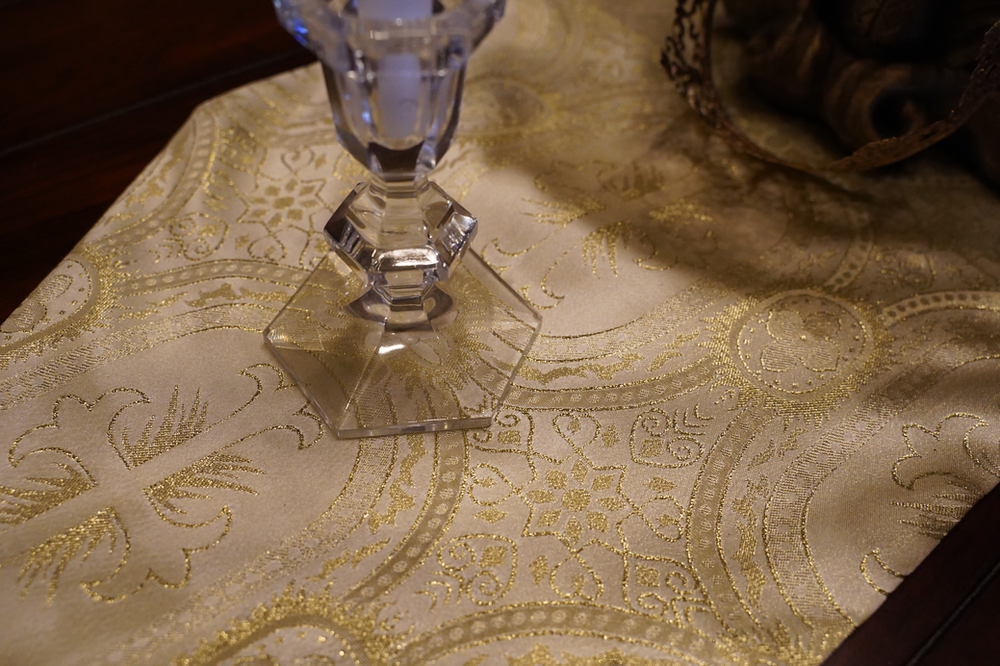

One of the rooms in our home is a tete-a-tete room. This is a small room for 'private' conversations or conversations between two or three people at most - basically think of it is a small parlor. My inspiration when we restored the room was Mark Twain's library designed by Tiffany. - blue and gold with accents of dark crimson found in the antique rug. I added peacock motifs on the walls in a soft gold and decoupaged peacock feathers on the woodwork - this small room made a perfect setting for the 'tomb'.

My youngest son, with his engineer mind, creates the 'tomb' every year from rocks. I made a runner from a different liturgical fabric to frame the tomb. On the night of Good Friday we seal the tomb (with sealing wax) and then on Easter Sunday morning, I rise early, move the 'stone' away, place a tiny battery operated light in the back so that light spills out from the tomb, and then as the children come down to see the tomb, inside they discover neatly folded two pieces of linen with the faint image from the shroud of Turin on it and the sudarium. (face covering.) So this particular diorama becomes interactive the few days before Easter Sunday!


Tip #3 - Create accents around the home.
With your focal points of dioramas in place, you can then add accents around the home. Since my home is filled with sculptures - I love 'dressing' them for Christmas, hats, scarves, etc. so with the sacred meaning of Easter Sunday in mind, I decided to place white veils on a couple of sculptures of my daughter that remind us that the Church is the Bride of Christ.

I also made 'stoles' for the menfolk - these are inspired by the priestly stoles you see in liturgical churches today - I created them to symbolize that we are a 'royal priesthood' as believers (as stated in Hebrews). On some of them I placed tassels as a nod to the tassels of the Jewish priests, and on my husband's I placed bells, for the same reason. I also placed a vestment clasp on his stole that has beautiful decorative work and the monogram IHS for In His Service.


In my tete-a-tete room I have some sculpture portraits of my sons and my daughter-in-law. So I placed stoles on two and and then crowns on the other two as we also will one day reign with Christ.


We have five fireplaces in this old home! So I utilized the mantels as places for accents. Using lace created with symbols of the cross, bullion, burlap ribbon and tassels. Also I created 'sprays' made from palms, lilies, peacock feathers, burlap, ribbon and tassels.







Tip #4 - Banner and Bell Rope
In my foyer, across from the portrait of the children, are the stairs. When someone walks into the house from the front door, the eye was easily led to the right with the diorama and large portrait, and I wanted to balance out the composition as a whole, so I placed a banner on the stair wall. The banner is 2ft by 6 ft.

Coming down the stairs, I created another accent with palms and a bell on ribbons, as the children go up and down the stairs I hear the bell tinkle as they tap it on the way. A fun reminder throughout the days of Easter Sunday!

The bell rope was inspired by one I made years ago for Christmas time - a long crimson rope with various sizes of gold jingle bells all up and down it. I hang it in the foyer from the top landing of the stairs. The children would ring it as they passed and now the grandchildren do to! And more often than not, guests can't resist giving it a ring as they walk by. So for Easter Sunday, I created a bell rope using 'church' bells that I stitched onto a beautiful liturgical sheer ribbon that has gold embroidery that shows on both sides.



Tip #5 - Don't forget Good Friday
As Christians, we know the rest of the story of Easter Sunday - however, as I would often tell my children - the disciples didn't know when Jesus was crucified and buried that it wasn't the end of the story. They were scared, filled with sorrow and especially I imagine Peter was 'beating himself up' for denying Christ. It was an empty cold feeling. So to keep that in mind as all aspects of Easter Sunday are represented through the house, I placed a black veil on my 4 ft sculpture of "Truth Denied" and she grasps two of the nails in her hand.

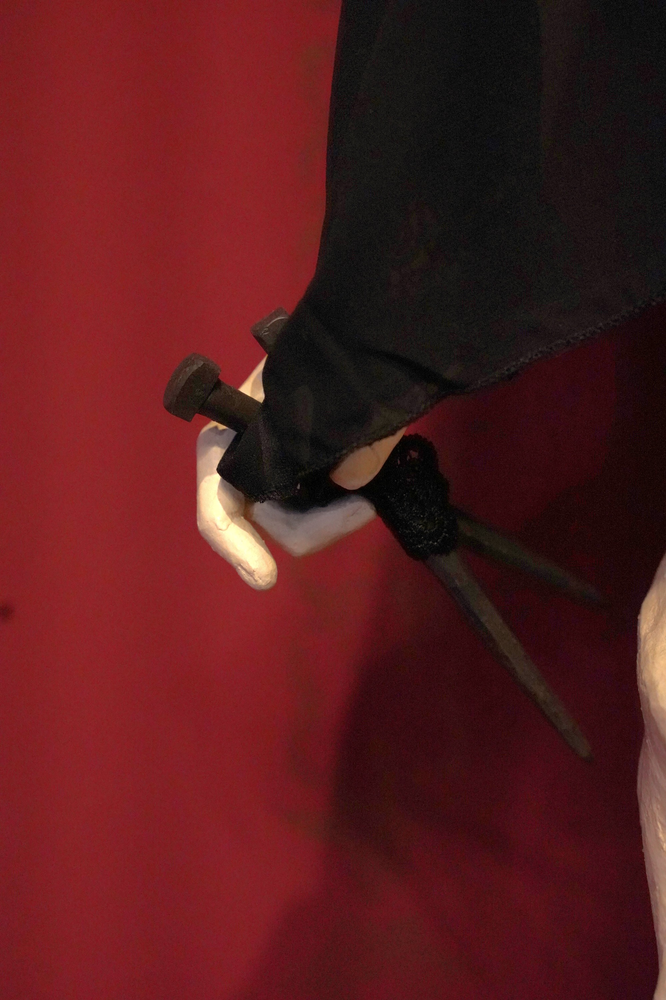

Tip #6 - Pay attention to your door and outside areas.
Though when we entertain guests always come through the front door, the main door our family uses is through my studio. So outside I created a garland of willow, palm and lilies to frame the doorway. Beside the door is a sitting area where I took an old springtime wreath that had small white flowers, and entwined an Easter lily in it. I then added a cross to the top of my other old brass candlestick as an focal point.


Since this is also the area where any packages or deliveries are placed, I like to think that these Christian symbols of beauty bring something to those who deliver them. My husband says "Beauty strengthens the soul" and if ever our family had a motto, that would be it!
Down by the road, I placed a scrollwork cross that I painted white. I set it out on Ash Wednesday and twined in purple ribbon. Most people today know that purple is a symbol of royalty - it is also the symbol for intense emotion and suffering. This is referred to as "passion" (not the passion of romantic emotion.) This is why the week between Palm Sunday and Easter Sunday is often referred to as the Passion week of Christ.

Once Palm Sunday comes, then I will change the ribbon to Palms, then on Good Friday I will use a black drape and on Easter Sunday morning an Easter lily will be added!



This is a beautiful visual message to all those who drive by - that there is something more to Springtime than just baby animals and colored eggs!
Tip #7 - Family traditions and the charm of the whimsical.
God created us with a deep complex appreciation for a variety of experiences. One moment we may want the drama and epic filled drama of good vs evil found in Lord of the Rings - in another moment, we may simply want to enjoy sharing a laugh with our toddler about the antics Peter Rabbit finds himself in. We cannot survive wholly on the big grand epic moments and neither can we on the small funny - what I call 'whimsical' moments - they and all moments in between make up the life we live on this earth. So don't discount the fun and value of memories that are also created when whimsicality is present. With my home now decorated with meaningful symbols celebrating the work and Resurrection of Jesus - I also wanted to include the fun memorable moments our family has shared during this time. For years we have colored eggs, we hide them and look for them and then either made egg salad or the boys will hit them with gold clubs into the woods as a treat for the fox, possum or raccoon in the area. We also blow one egg for each of us that we spend our most artistic time on. We initial and date the bottom and hang these eggs on a 'tree'. Some have sacred symbols, some are just whimsical (like Irish dancing sheep!) but they are fun to look at from year to year.

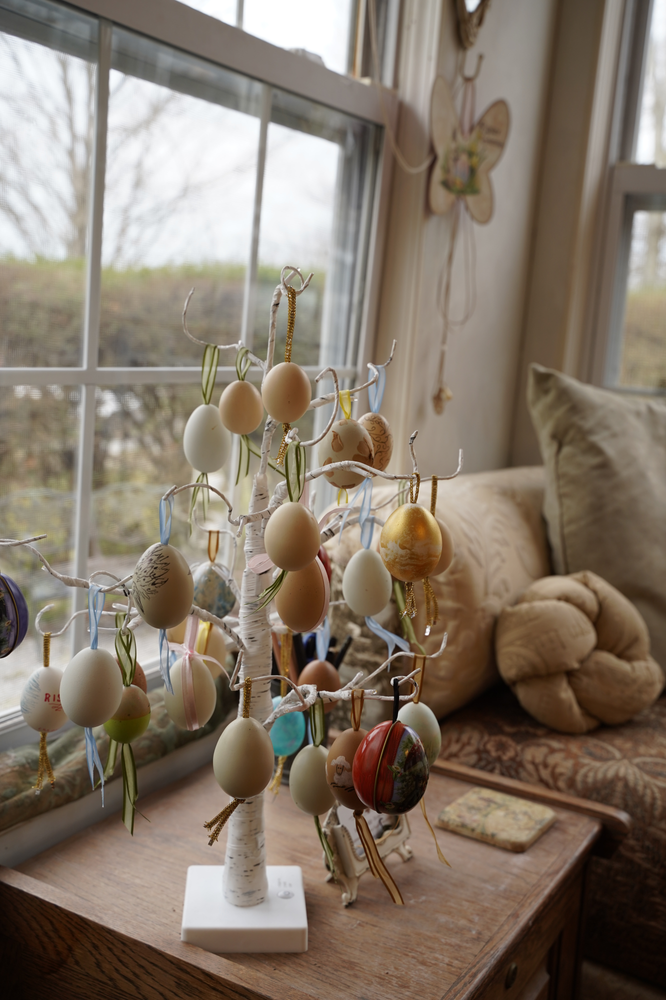
Since I haven't much room in the rest of house for decorations, I've reserved the kitchen and my studio for more of these whimsical decorations full of fun family memories. I also found one year to my great surprise, Victorian Easter decorations that were reproduced! So I hang them around the studio. I also found a collection of Victorian Easter cards that had been reproduced - so I placed them on top of white velvet bunting - some are sacred some are just fun.

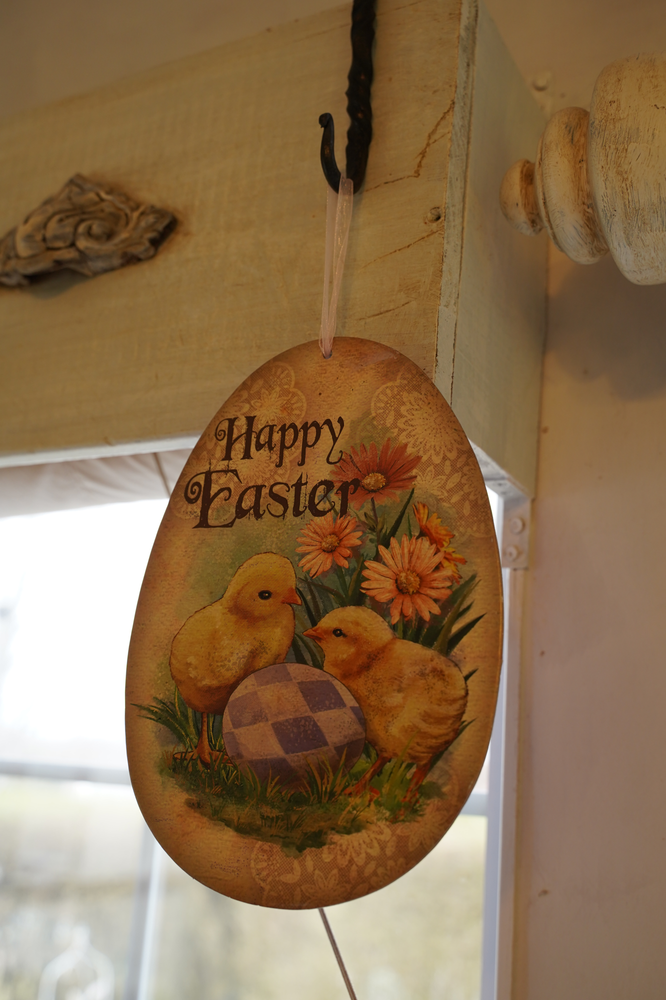

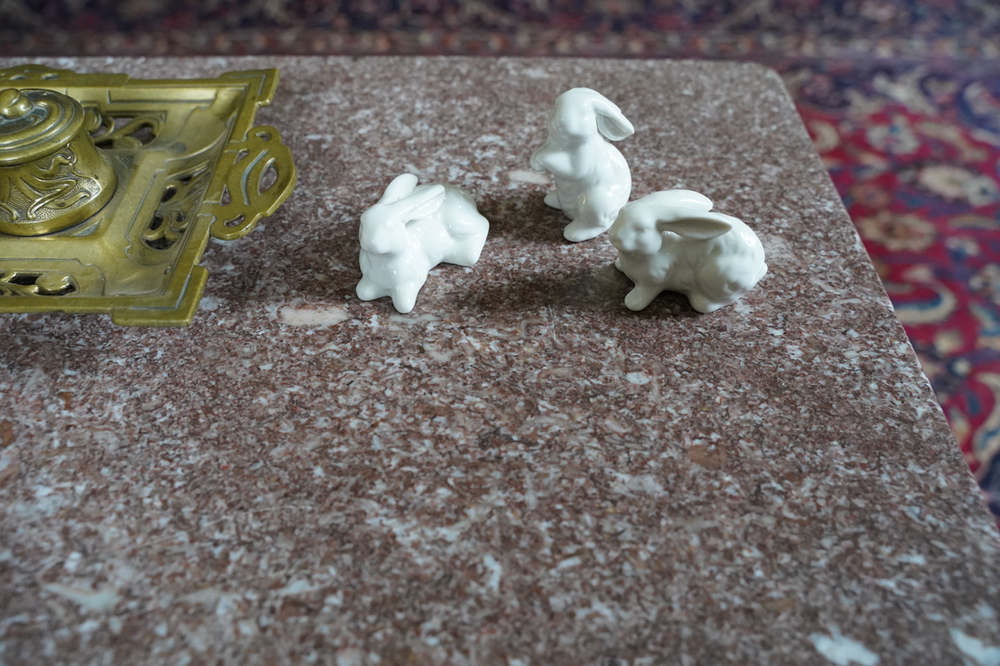

And then, ALWAYS in the middle of Lent is St Patrick's Day! One of the reasons this particular day is so widely celebrated is that the Catholic Church gave it the status of a Holy day - therefore - you weren't obligated to observe your Lenten fast on that day! Party! And let's celebrate one of the greatest missionaries and his work of all time! Patrick! We enjoy sharing the story of St Patrick with our children, and if you want to see a GREAT documentary about Patrick's life and work. Check this out:
So I have a touch of whimsy in the studio the week of St Patrick's Day.

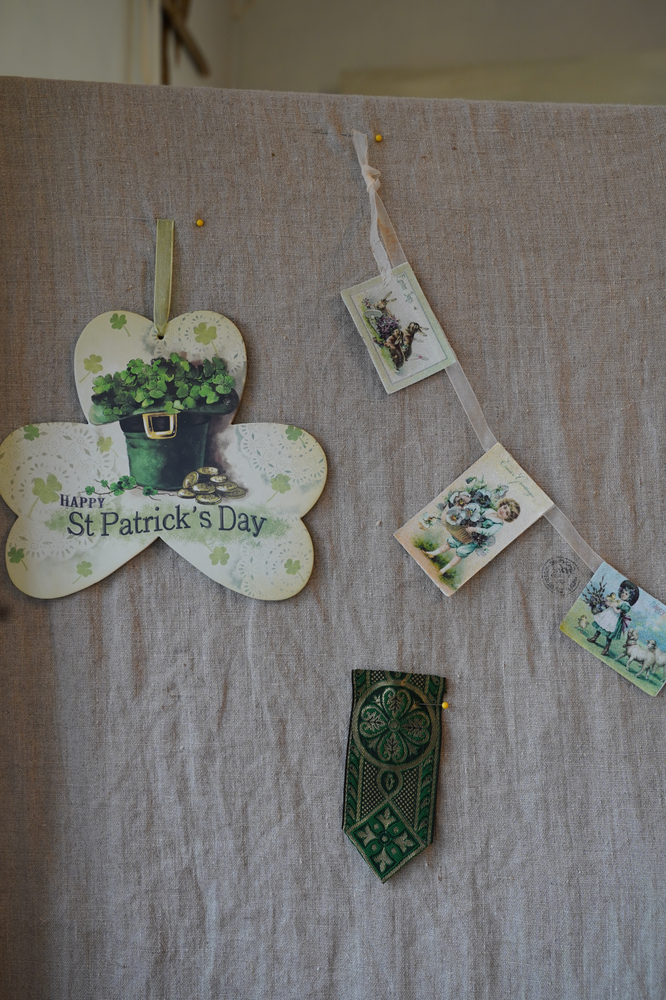
Final Tip: Make it your own.
Each family has their own preferences, their own style and approach to celebrating their Christian Faith. I hope that perhaps some of these tips will inspire ideas for you and your own home, as we all thoughtfully prepare for Resurrection Sunday.
To leave a comment you must be logged into Facebook on your device.




